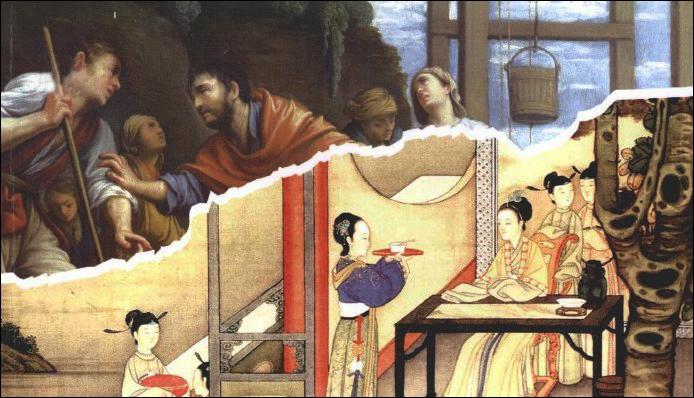Challenges and Prospects of North American Immigrant Families
Challenges and Prospects of North American Immigrant Families By Dr. Wang Tingfei From a historical perspective, American immigration history is closely tied to the development of the Christian faith in the United States. Celebrations like Christmas and Thanksgiving have deep Christian roots, and the American Declaration of Independence and Constitution are imbued with Christian ideals. While modern America embraces a diversity of religions, cultures, and values due to waves of immigration and social evolution, Christian beliefs and values remain deeply embedded in the country’s laws, morals, culture, and daily life. Traditionally, immigrants view their identity in North America through the lens of their own backgrounds. Chinese immigrants often identify themselves and the next generation by cultural and national terms. For example, first-generation Chinese immigrants see themselves as "Overseas-born Chinese" (OBC), while the next generation is considered "American-born Chinese" (ABC). However, ABCs often identify as the first generation born on American soil, calling themselves “Chinese American,” “American Chinese,” or “Asian American.” OBCs, shaped by their language, culture, and values, experience a gradual shift from being geographically Chinese to being culturally Chinese after years of localization. Despite assimilating into the local environment, they remain distinct from ABCs on the identity spectrum. While exploring the differences between OBCs and ABCs, there's another often-overlooked group: the "1.5 Generation" (1.5 Gen). Due to their fluency in English and integration into American culture, they are often mistaken for ABCs. Broadly speaking, 1.5 Gen refers to those born in Asia who moved to the U.S. before completing university education. They live between Asian traditions and Western culture in terms of values, communication, and worldview. Although OBCs may see 1.5 Gen as the most successfully localized group, as they understand Asian cultural roots while adapting well to American life, their journey of identity formation involves complex processes of deconstruction, construction, and integration. Chinese immigrants are deeply influenced by the traditional belief in the supreme value of education. While OBC parents strive for the "American Dream," they place expectations of upward mobility on 1.5 Gen and ABCs, often leading to family conflicts. The 1.5 Gen, like their parents, come from Asian cultural backgrounds. As they undergo the processes of deconstruction, construction, and integration, they adapt to the language, culture, and values of their new environment, often helping their families integrate into American society. While witnessing their parents’ sacrifices for the American Dream, they frequently serve as family translators and advocates, sometimes bearing the shame or sacrifice that their parents experience due to language and cultural barriers. This can lead them to admire the independence of ABCs, leaving them caught between two cultures. ABCs, who grow up fluent in English and deeply immersed in American culture, often struggle to communicate openly with their Asian parents. Their inclination to assert individuality and challenge traditional authority is another common source of conflict in Chinese immigrant families. Immigrating to the U.S. is a choice involving values, but it also comes with the need to reconcile geographic, cultural, and ethnic identities. Chinese culture highly values tradition and knowledge, and Chinese immigrants may relate to the Christian values in American culture. However, acceptance does not equal assimilation, as the Chinese have a unique cultural identity that they are reluctant to fully dissolve into mainstream culture. Compared to other minority groups, Chinese immigrants are particularly committed to preserving and continuing their traditional culture. Chinese churches provide a valuable environment for immigrants to address cultural and social tensions while navigating localization. These churches offer a space where OBCs, 1.5 Gen, and ABCs alike can safely and harmoniously transition their identities within biblical teachings. This process of deconstruction and integration allows immigrants to build an identity that harmonizes both cultures, forming a unique sense of self on North American soil. Although these three identities may occasionally clash, Chinese churches provide a way to integrate them into a cohesive whole, creating a "new" identity that is neither purely American nor purely Chinese. This identity allows for selective retention of cultural heritage while incorporating elements of the new culture, underscoring the distinct and valuable role of Chinese churches. (Author: Dr. Wang Tingfei, an ordained minister and currently the Academic Dean of Logos Evangelical Seminary)1. Understanding American Faith and Culture
2. Identity and Culture of Immigrants
3. The Overlooked 1.5 Generation of Immigrants
4. Conflicts in North American Immigrant Families
5. The Role of Chinese Churches in North America





